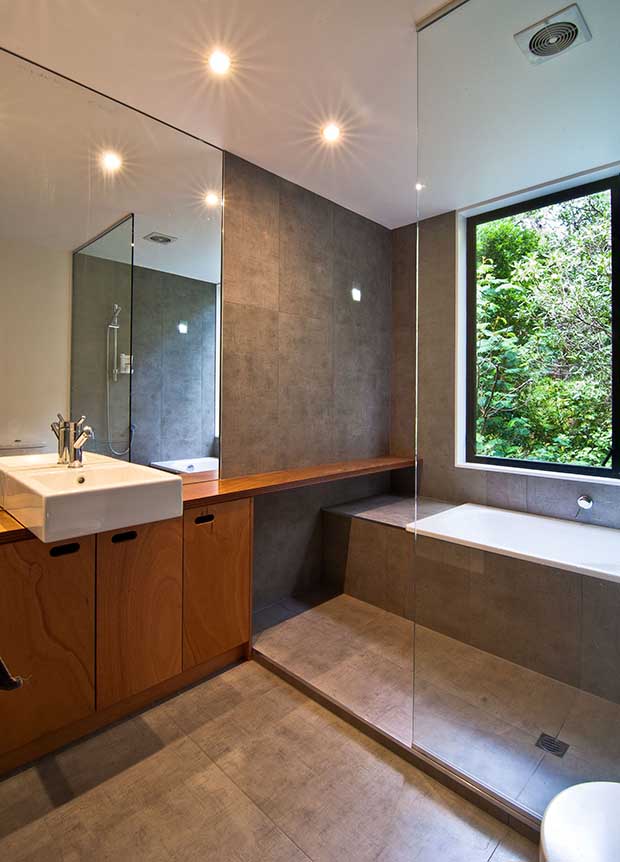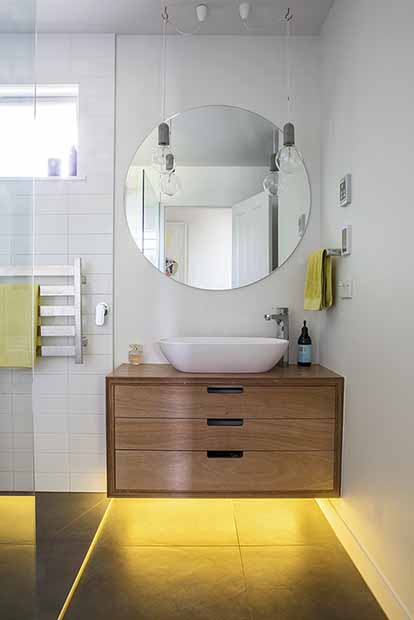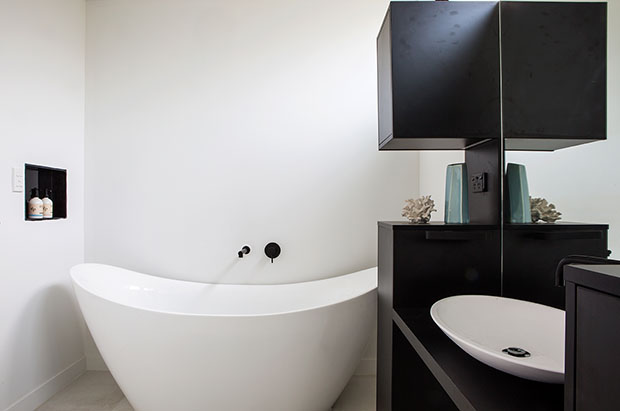When you’ve designed more than 200 bathrooms, you know a thing or two about the ins and outs of layout, fittings and features. Interior designer Sam Elliot works at Box Living, a combined design, architecture, and construction company, and is adept at fitting oodles of convenience into a compact floor plan. Sam teams practical thinking with good-looking, modernist style and often suggests sustainable options to homeowners.
Over the years, she reckons she’s developed a fool-proof plan for getting BIG use out of a SMALL space. Here are her tips:
- Whether building new or re-shaping a floor plan, at the very least aim for a rectangular-shaped room that is at least 2.6 metres by 2 metres.
- Reserve 2m x 1.6 as the’ wet area’ comprising the shower and bath. A further 1 metre should be reserved for the loo and vanity zone.

- Think of the space as a wet room with minimal partitioning and where the bath (since it is located right alongside the shower) may actually get wet from overflow spray.
- Always locate the loo behind the door that opens to the bathroom. You don’t want it in your face on entry. More importantly, to assure privacy, you shouldn’t be able to see the loo from the corridor or another room in the house when the bathroom door is open.
- Free-standing vanity units and baths give the illusion of space – and less clutter! To make a sculptural feature of it, the bath is usually positioned at the long end of the rectangle, usually opposite the door.
- Another trick for making this room feel more spacious is to opt for no partitioning except, ideally, a pane of glass to separate the shower from the dry area. Allow a 600mm gap (between this and, say, the edge of the vanity) to walk from the dry to the wet area and vice versa.
- Choose a towel rail that is IP-rated (ingress protection) which means it is sealed against moisture and can be safely installed in the wet area. A preferred location for is beside the bath and opposite the shower.
- Consider planning soap recesses in the shower but understand they cannot be put on an external wall. Locate the shower mixer in a place it can be turned on without going into the shower itself.
- The vanity tends to go on the opposite wall to the loo within the ‘dry area’. One that is wall hung will make a small room feel larger and allow under-unit LED lighting on a sensor switch to be installed. This is great for when you visit the bathroom in the wee small hours.
- Add the finishing touches that will make this your own haven. Circular mirrors and pendant lighting are ‘on trend’ right now and capture a sense of Hollywood glamour.

- Install a loo with a ‘half flush’ for times when a full flush is just not necessary.
- Look for the WELS star rating on showers and taps. This is an indication of how many litres of water per minute the shower/tap uses. A low-flow, efficient shower will help save water and if you take more showers than baths – showers use on average a third less water than a bath – you’ll be doing your bit for water conservation too.
HomeStyleGreen have also spoken to Dan from Box before. Or for further reading, check out Box Living’s blog.

Leave a Reply